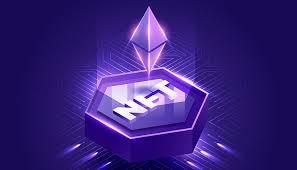If you’ve been online at any point this year, you’ve probably heard people talking about NFTs. Short for non-fungible tokens, NFTs are unique digital assets. They’re a type of cryptocurrency token. However, unlike a fungible token like Bitcoin, which can be swapped for other interchangeable tokens, NTFs are non-fungible, meaning that they are entirely unique. It’s a way of creating scarcity online and providing proof of authenticity and ownership. It’s most commonly applied to digital art, although it can really be applied to just about anything where uniqueness is the chief selling point.
What is an NFT?
NFTs, or non-fungible tokens, are a type of cryptocurrency that represents a unique asset. Unlike Bitcoin or other fungible tokens, which are interchangeable and can be divided into smaller units, NFTs cannot be divided or exchanged. This means that each NFT is like a fingerprint completely unique and unable to be replicated.
When were NFTs invented?
The first ever NFT is Quantum, by Kevin McCoy and was created in 2014. Quantum was created on the Namecoin blockchain, before Ethereum, the now leading NFT blockchain, was even created. McCoys NFt featured a video clip created by his wife. It was later sold for $4. The NFT was sold again in early 2021 for $1.4 Million. In October 2015, the first NFT collection, Etheria, was created. The collection was presented at DEVCON 1 in London, the first Ethereum developer conference.
In 2017, CryptoKitties became one of the first games to use NFTs. In CryptoKitties, players can purchase, trade, and breed digital cats. While the game itself is fairly simple, it proved that NFTs could be used to represent real-world assets in a digital space. And since then, the use of NFTs has exploded. Today, you can find NFTs representing everything from art and music to sports highlights and tweets!
How Do NFTs Work?
NFTs are built on top of blockchain technology specifically Ethereum’s blockchain first. When you purchase an NFT, you’re actually purchasing a token that lives on Ethereum’s blockchain. This token is what gives you ownership of the asset represented by the NFT.
Because they’re built on Ethereum’s blockchain, NFT transactions are public and transparent. This means that anyone can see when an NFT is created or sold but the identity of the buyer or seller remains anonymous. Ethereum’s blockchain also makes NFTs tamper-proof and secure –meaning that they can’t be counterfeit or stolen.
Why Are People Buying NFTs?
People buy NFTs for a variety of reasons. Some people see them as investments, betting that the assets they represent will increase in value over time. Others simply enjoy collecting unique digital items. And some people see buying NFTS as a way to support their favorite artists or creators by giving them direct financial compensation for their work.
Whatever the reason may be, there’s no denying that people are buying NFTS in droves – and that the market for them is only going to continue to grow. If you’re thinking about buying an NFT, there are a few things you should keep in mind. First, make sure you understand what you’re buying – and why you’re buying it. Second, research the seller to make sure they’re reputable. And finally, don’t invest more than you’re willing to lose!
The downsides of NFTs
The following are the disadvantages of Nft, they are as follows:
1. NFTs are volatile and illiquid
NFTs are still in their early stages, so the sector isn’t very liquid. Besides NFTs are not well understood, and there are just a few potential buyers and sellers. As a result, trading NFTs can be incredibly challenging, especially during bad times. It also means that NFT prices might vary greatly.
2. NFTs generate no revenue
Unlike stocks and bonds, or real estate, where owners get dividends, interest, and rent, NFTs do not give such revenue. The returns on NFT investments, like those on antiques and other collectibles, are based on price appreciation, which you can not count on.
3. NFTs Have the Potential to Perpetuate Fraud
While the trustworthiness of a blockchain cannot be questioned, NFTs can be utilized to commit fraud. Indeed, a number of artists have recently reported finding their work for sale as NFTs on online marketplaces without their permission.
This clearly contradicts the purpose of using NFT to facilitate the sale of paintings. The value proposition of an NFT is that it uses a unique token to verify a real work of art, assuring that the person who owns the token also owns the actual work of art.
A serious problem arises when someone creates an electronic image of the original work, attaches a token to it, and sells it on a virtual marketplace. There isn’t even a reference to the original work. The token is associated with a forged replica.
4. NFTs Can Be Harmful to the Environment
Building blockchain records requires a significant amount of computer energy and there is growing concern about the long-term environmental impact of the process. According to some projections, if current trends continue, the carbon emissions related to mining cryptocurrencies and NFTs would exceed those associated with the whole city of London in the coming years. As NFTs transform global marketplaces, eliminating the need for travel and office space use, blockchain enthusiasts claim that an offsetting drop in pollution is happening.
In conclusion, NFTs are a hot commodity right now but their history is one that has spanned nearly a decade with them being first created by Kevin McCoy in 2015. Throughout 2015 and 2020, strong but slow updates were made to the NFT ecosystem. In early 2021, the finance and art world was hit by a huge explosion of interest in NFTs which still persist to this day despite a small NFT market crash in 2022.
Crypto
Who Invented NFTs and When? A History of Non-Fungible Tokens
- by Blockchain Reports
- May 27, 2023
- 0 Comments
- 891 Views


